For as long as we can remember, we have been listening to stories. And when it comes to building great content and outlining your content marketing strategy, Kent Lewis, President and Founder, Anvil Media Inc says, “Tell a Story. While this isn’t new news, it’s a timeless winner than is easier than ever to accomplish via Podcasting and Video content. Facts tell and stories sell, so sell your company and its products/services with real stories from real employees, customers, partners and industry peers. Create or sponsor a regular podcast or videocast. Create testimonial and case study videos instead of white papers.“
We listen to great storytellers with our ears and hearts wide open. This is why businesses with great stories (read content strategies) flourish because they have mastered the art of storytelling, or in today’s terms, content marketing strategy.
Content creation and content marketing are all about storytelling. It is all about how you present your story, your journey, your ideas and your expertise.
Content is the reason search began in the first place.
Influence of Internet on Consumers (Through Content)
As said by Lee Odden above and According to a Nielsen global survey, the Internet has an important influence on consumers interested in buying new products in several categories. Internet Influences a large percentage of consumers in:
- Electronics (81%)
- Appliances (77%)
- Books (70%)
- Music (69%)
- Food and beverages (62%)
- Personal hygiene (62%)
- Personal health/over-the-counter medicines (61%)
- Haircare (60%)
- Clothing (69%)
- Cars (68%).
Needless to say, Content Marketing Strategy is the need of the hour.
The above was one of several such studies being done by global brands, retailers and market research agencies to understand the evolving consumer buying behaviour. The growing number of studies worldwide are finding increasing trends of consumers
- Buying online
- Researching online, before buying online
- Doing research online, before buying at a store
- Researching online, before ordering over the phone
A Trend, which is here to stay. Needless to say content available on the internet has a significant impact on the consumers’ purchase decision.
What is Content Marketing Strategy
As defined by the Content Marketing Institute, content marketing is:
“A strategic marketing approach focused on creating and distributing valuable, relevant and consistent content to attract and retain a clearly-defined audience — and, ultimately, to drive profitable customer action.”

Content marketing is the umbrella of strategies, marketing techniques and tips marketers use to create and distribute original, valuable and relevant content. “Having a well-thought-out brand identity that serves as the foundation of your content is crucial in designing a content strategy. Your brand identity can be thought of as your personality, values, and beliefs.
And your content strategy can be thought of as the vessel that helps you communicate that personality and those values to everyone else. Keeping this in mind, you should aim for consistency when designing your content strategy; consistency in tone, messaging, and voice” says Simone Timen, Community Marketing Associate at JotForm.
Content Marketing Strategy Goals
This content is created and marketed to attract a specific audience to convert them for profit. Content marketing strategies consist of planning, designing, publishing, and finally, distributing content for the audience. It is done for the following purposes –
- Attract new customers.
- Retarget customers who have shown interest in the past.
- Expand reach.
- Increase brand awareness.
- Generate leads.
- Engage with users and customers.
- Increase engagement with users online
- Generate sales
- Customer retention and loyalty
- Channel marketing
Content Marketing Meaning for your business
Though the content you provide tells stories you want to tell, the thing to be learnt is how to make it more customer-centric.
Nobody likes a person or a business that keeps talking about themselves.
People only start taking you seriously if they know that you have their best interests at heart. So, create a content marketing strategy that addresses a problem. “Keep in mind that you should provide your existing customers with a reason to visit your website. When you have well-written, beneficial content on your blog that can provide useful tips, then it can encourage repeat visits. Plus, this will set up your company as an expert in your field, which will give potential customers an even bigger incentive to purchase your products or sign up for your services” says Sumitra Senapaty, Wow Club.
That is how you would be seen as an expert in your industry. To create a great marketing plan, you need to identify that pain point, and then create and market the right kind of content offering the solution.
Instead of thinking about content marketing as a separate vertical, integrate it with other channels of promotion such as social media, search engine optimization, pay per click campaigns and inbound marketing strategies.
Content marketing strategy is a long term strategy which is based on creating a strong relationship with your audience. This happens when you tell them how you have become what you have become in the most presentable manner.
Why Content Marketing Strategy
Why content creation is so important?
What are the various types of content you should invest time in?
What are the different content strategies? Does your business need to have an online presence?
Do you need to market your content? Where can you do so?
If you have such questions and struggling to move forward, you’ve come to the right place!
Your website is your face to the world. If you do not treat it wisely and respect it, why would your customer? I know, I know this is quite philosophical, therefore I have some real reasons below:
1 Creating Good Content is Your Best Business Strategy
Google has said in clear terms that they would like to enhance consumers experience on the web. They want to do it by making available the best content.
What it means is that Google is user-oriented and they are not leaving anything to guesswork now. For Google, the future of the web is great, greater or greatest content.
2 Google is moving away from backlinks to Content Quality
Google and other search engine algorithms for long rewarded links more than a web property and its content.
You can see tons of content on link building, several offers to build paid ranks and bad quality content featuring on page 1 of Google. To do so you can hire someone to create links and get traffic.
However, to become user-oriented, Google is increasingly moving away from backlinks to quality content (which is a far tougher job). Now Google is ranking user-friendly, high information websites over those with high link counts.
Ben Nettleton from Global Healing suggests that “You need to create content that favourably presents (sells) your product or service. Why would anyone want it? What’s the advantage over the competition? What will you miss out on if you don’t have it? Why is it important to act sooner than later? If you’re using content — whether it be an article, a product page, a video, or a social media post — to identify people’s needs and placing it alongside a solution that doesn’t feel like desperate, out-of-place pitch, you can start generating conversions”.
3 Sophisticated & aware Consumer
Consumers are increasingly becoming sophisticated, channel agnostics and expert of AnyWhere Commerce.
They are impatient and it is important for marketers to develop agile management skills to take advantage of this trend by being the first in their category to go online and educate consumers before their nearest competitor does.
At the same time, it has become imperative for brands and retailers to keep communication consistent across the channels.
How to Leverage Content Marketing
Want to create an efficient content marketing plan? Here’s how!
Online presence driven by targeted content is becoming increasingly important for your profitability and also for your survival in the long term.
Your website should communicate your brand proposition and present it in a cohesive manner so that consumers can connect with your brand.
1 Build a user-friendly Web Design
You are because of your customer. If your customer does not invest (yes invest, as they are taking chances by using your offering) in you, soon you will be out of business. Therefore it is important that your website comes across as an organized, trustworthy and informed resource. Otherwise, your visitor will not feel confident.
2 Go for Good & Appropriate Content:
“ Create Content based on Company Purpose. Effective content that maximizes reach and engagement has to be authentic and resonate with target audiences”, says Kent Lewis, Anvil Media, Inc.
BASIC LEVEL: An informational website at the most basic level, which is easy to find online and navigate is a must. Managing content of your website is another important activity, it should speak directly to your audience and answer their potential questions in an easy to understand way. This is the first tenet of the content marketing strategy.
ADVANCED LEVEL: An E-Commerce website should allow consumers to select, purchase, receive and return their goods. Its content on the product should go beyond basic product specifications to product-consumer life context content. A consumer should get consistent multichannel e-commerce experience, just the way they would get offline.
3 Keep Track of your Competition
You should keep track of your competition. “You should try to find keywords that your competitors rank for and that you don’t rank for. Create content around these keywords to rank for them, and launch a link building campaign to acquire backlinks pointing to your new content. New content creation in combination with link building can make a huge difference for your SEO and help you acquire more traffic online” says Gregory Golinski, Head of Digital Marketing, YourParkingSpace
James Parsons CEO of Content Powered says, “Chances are, an article already exists out there about what you’ve written, so if you aren’t providing any new information or doing it better, it’s unlikely your blog post will perform well. With blogging, I like the measure three times, cut once approach – it’s better to come up with a handful of potential topics and narrow it down to the best ones than it is to just start writing an article about something without doing your homework”.
4 Know what you expect from your content marketing strategies
First and foremost, you need to understand what is that you are expecting. Setting out a content marketing mission statement helps a lot. By doing this, you define what your target audience is, what content you’ll create, and how it will reach the audience and finally, how would they benefit from the content created by you.
Know your business goals

Jesse Silkoff, Co-Founder and President, MyRoofingPal says, “When designing a content strategy for your brand, it’s important to think of how (or if) trends will factor in. Some brands don’t do well with trends, and you don’t want to seem desperate and out of touch by trying to hop on the hashtag bandwagon when the trend has nothing to do with your brand. But if you provide thoughtful commentary, your brand can often beseen as an authority on current events”.
You need to know what business goals you are looking to conquer. Usually, business goals include increasing revenue, increasing sales, getting more traffic, SEO ranking enhancement, reducing marketing costs and increasing engagement of social media management. When it comes to B2B Businesses, the top priorities while content marketing must be:
- Creating content that engages users.
- Understanding what content is effective and what doesn’t work for you.
- Creating more and more visual content – videos, images, etc.
- Finding marketing techniques and ways to promote that piece of content.
- Optimizing content.
5 Set standards by establishing Key Performance Indicators
While content is all about quality, content marketing is all about quantifying the success of the content created. Set key performance indicators (KPIs) for your content marketing plan to make them measurable.
It makes it easier to know if you have achieved your goals and can be measured in terms of traffic, revenue, sales and different aspects of social media metrics. Your business goals might be to:
- Increase traffic or cross a certain revenue standard.
- Get more leads through your contact forms on the website (more sign-ups).
- Collect email addresses to build an email list for your email campaigns.
- Improve SEO ranking. Kas Andz, Director of Kas Andz Marketing Group says, “As much as creating content that is valuable for your audience is all well and good – don’t forget basic SEO stuff. Content that’s been optimized well, could even rank on Google and bring in additional traffic – as long as there are keywords related to the content piece, worth targeting. On top of that, if there aren’t any keywords worth targeting and the content itself isn’t likely to rank – if it is a top of funnel content piece, you could still perform some outreach, and attempt to build links to it. This could bring in referral traffic instead, but (if executed well enough) that link equity could improve the overall authority of the website, and improve rankings across the board“.
Keeping an eye on KPIs would also help you measure ROI on your marketing expenditure. It is essential to know how much you spend on specific content marketing campaigns and what you got out of it.
6 Market research and defining the target audience.
You need to KNOW your audience to cater to your audience. The time to be vague about who would be interested in paying for the services you offer is long gone. You have to know what audience are you speaking to.
“Develop user personas and consider how each article ties back to your goal. If your goal is to drive new leads or sign-ups for a product, every article should solve a problem or question for a target persona – and then have natural CTAs throughout the piece. If you begin to create content that dead-ends in terms of navigating users down the funnel, you have a useless article that won’t contribute to your content strategy goals.” Says Levi Olmstead, Director of Marketing, 2ndKitchen
You need to know the demographics of your customer base. This includes their gender, age, income and education. This can be known through Google Analytics when you collect your subscribers’ email addresses or analyse social media analytics.
You can also take feedback from your customer base. Ask them if they are liking what you’re delivering? What type of content would work for them? What issues do they face surrounding your product or industry? Dig deep and get to know your audience.
7 Carry out a content audit.
If you have been in your business for years, chances are you’ve already implemented your content marketing plan (wholly or partially). It might be any piece of content from a blog to a video, from a podcast to a creative illustration.
If so, you need to stop and analyze. Go through your social insights and see if what you’re already doing is working out for you. To perform a successful content audit:
- Take note of all the content assets you’ve created and put out there for the world to see.
- Assess its effect on people through insights and analytics.
- See how resourceful your content pieces have proven to be to your target audience.
- Identify what worked and what didn’t

- Find out loopholes.”When designing your content strategy, look for gaps in content to match user intentions. For example, look at a topic like how to meditate, which, topically, gets a lot of search volume. The number one position does not have any content on the page related to how to meditate at home, which also gets a lot of search volume. People are intending to find help meditating at home and there isn’t a lot of great content available to match that specific intent. If the content on the topic of meditation supports your organization’s goals, you need to look for gaps and create valuable content for them” says Lance Beaudry , Avalanche Creative
Once you’ve carried out these steps, you’d get an idea of how to make your content strategy stronger than ever
8 Determine the best channel(s) or medium(s) for distribution.

David Adler, Founder and CEO, The Travel Secret, says, “To maximize your investment in content creation, focus on content that can be adapted and shared across multiple mediums and platforms. Content such as how-to guides and top ten lists are both simple to create and easy to adapt as blog posts, videos, and infographics for sharing on your website, in emails, or across social platforms. When sharing on social media, one blog post can easily become several tweets by highlighting different quotes from it.”
Not all channels might prove to be worth your time. You won’t get to understand this in a day or two. It is a trial and error method that you might have to run for a while. This will help you conclude which social channels or other mediums prove to be useful to you.
Pay Attention to Your Channels

”Look at the traffic and conversions each of your current channels generate. What are your top channels, middling channels and lowest performers? From there consider your team’s capacity. Ask yourself, how many channels can they effectively manage? From there, decide on the channels you want to nurture for this quarter. Track their growth, their reach and the effort going into each one of them. You should reconsider which channels to focus on before the next quarter, depending on how the channels perform.” Says Jeilan Devanesan, Content Marketer, VENNGAGE
This is because it is not necessary that you might find your target audience on all platforms. Google analytics, once again, will come to your rescue! It will help you determine where most of your traffic comes from and where does this traffic get a hold of your resources.
Once you have this information, it will be easier for you to decide which platform or network to focus on, if not all.
9 Decide what types of content marketing you’ll engage in
If you are starting from scratch, now is the time to decide the types of content you will invest time in creating. Mostly, websites tend to create and publish excellent content on their website in different sections and tend to share it on various platforms.
Types of content you can include in your content marketing plan:
- Blog posts
- How-to videos
- Explainer/demo videos Charts/graphs
- PDFs/eBooks
- Autoresponder emails and weekly newsletters
- Book reviews/summaries
- Webinars
- Checklists
- Guides
- Whitepapers
- Vlogs
- Free templates
- Presentation slideshows
- Free resources
- Podcasts
- Articles
- Press releases
- Interviews with big players of the industry
- Images
- User-generated content
Usually, the content marketing mix includes blogs, videos, PDFs, social posts and email marketing plan.
You can also come up with unique ideas of content creation and start a new trend! From an SEO point of view, blog posts are the most important of all. They help in getting you ranked better in the search engine results pages.
So, make sure the blog posts (or any other content asset) you create are optimized and keep the users asking for more.
10 Arrange and allocate resources.
By this stage of creating a bullet-proof content marketing strategy, you know the content you can create, who is it for and the platforms appropriate for the content.
Once you can answer these questions, you need resources – someone with skills to create those content assets, the tools to create the same and someone with the knowledge of posting this content across channels and mediums.
You need someone taking charge of producing and maintaining the quality of content. Allocate the resources, such as people and digital marketing tools, to create the content.
You can hire in-house content creators, writers and designers (for graphics and visual content like creatives and videos). If your budget can’t fit and feed an entire team for full-time hours, you can also hire freelancers.
You also need to create profiles on social channels like Facebook, Instagram, YouTube, etc. If you hire full-time designers, you need tools like Adobe Photoshop, Illustrator, PremierPro, etc.
11. Figure out the content workflow.
You need to set guidelines, protocol and process for any post to get published. This would be along the lines of:
- Blog Posts
- Getting the post idea approved.
- Writing the actual post on content management systems like WordPress or any form you use.
- Adding complementing images (With credit, if needed).
- Getting it to proofread by the editor.
- Making changes if any.
- Final approval.
- Case studies
- Uploading it on the site.
- Publishing it across platforms.
12 Create a systematic (and practical) content calendar.
Once you and your team get the hang of the process, create a content marketing calendar. Don’t overdo it. Don’t overexploit your resources. At first, keep it easy.
Once everybody gets in the groove, increase the number of posts while maintaining the quality. Planning is the key to any well-performing content marketing strategy.
To create a viable content and editorial calendar with the entire team, discussing the feasibility. Take inputs from others as well. Share it with the whole team so that everyone is on the same page.
We can’t stress this enough, but keep the workflow manageable initially. When the time comes, you can increase the quantity.
13 Now, create!
You have the human resources. You have the tools. And you have a plan. Now. Get. Set. GO! Start working on creating your content and never look back.
Mackenzie Deater, Content Strategist, Evenbound says,” When designing your content strategy, it’s best to think about the top three or four topics you want to be known as an authority on. Maybe these are services you provide or products you sell. Each piece of content should relate to one of these topics and should link to what’s a called a pillar page — a thorough, long-form piece of content that gives a wide overview of that main topic you’re hoping to rank for. This method of linking helps build your authority on those key topics.
Since all pages related to that key pillar page topic are linked together, when one page does well, all of the pages receive a boost. Not only is this a strategic way to build a content strategy, but it’s also a helpful way to make sure your content is addressing each aspect of those key topics you want to rank for. You can visualize each topic cluster easily, and pick out the places where you haven’t yet answered questions or solved problems.”
14 Market the content you have created.
Now comes the part you’ve been waiting for. You have created fantastic content, and now it is time to show it off to the whole world. It is time for sharing your content.
Don’t be shy to flaunt what you’ve created. Use most of the platforms you have decided to experiment on. You can also experiment with the best time to visit and schedule posts accordingly.
15 Measure the performance.
Now, it is time to see how well your content babies have done. You might be surprised to see the results, so be prepared for the best and the worse.
Use Google Analytics and Social Media Insights for analyzing the performance of every content asset. Compare the performance with the Key Performance Indicators you’ve set as goals.
It is a continuous process, as well. Keep monitoring your content.
You’re all set. So, Research. Create. Market. Measure. Repeat!
How we can help:
Based on your business objectives and market scenario BrandLoom Consulting will help you build a content marketing strategy to bring you closer to your consumers.
We will enable you to deliver accurate and consistent Consumer-Centric Product Content across all distribution channels, be it Internet, or store or any other module. This is what makes BrandLoom one of the best content marketing services agency in India.
* Links describing the importance of Online Content
87% of consumers research products online, buy offline
81% of Shoppers Conduct Online Research Before Buying
How the Internet Affects New Product Purchase Decisions
Internet And Social Media Are key Factors To Influence New Product Purchase
Most shoppers go online to research products before buying in stores

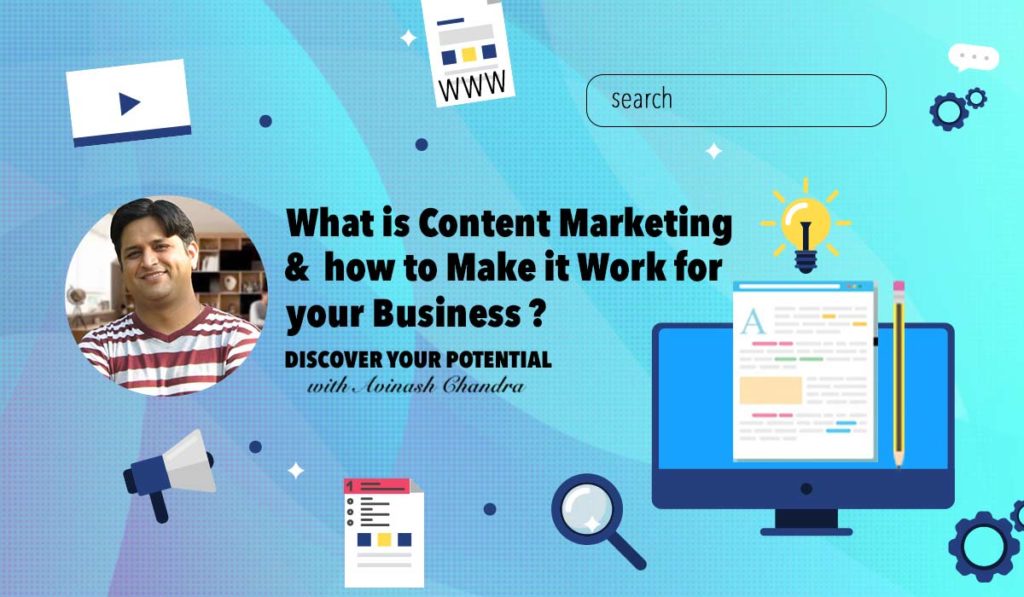


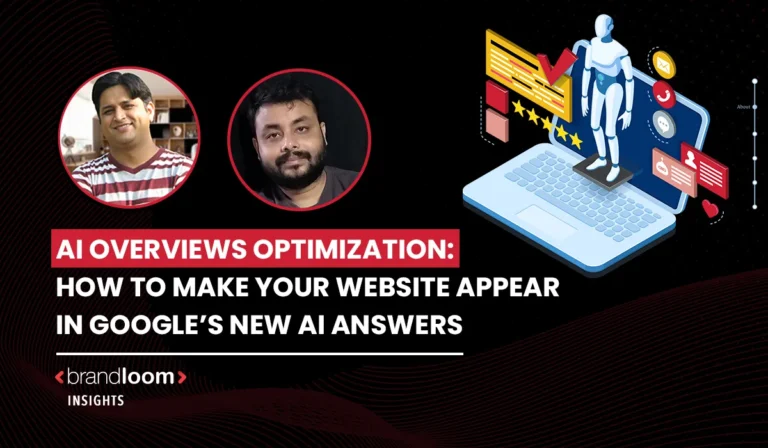
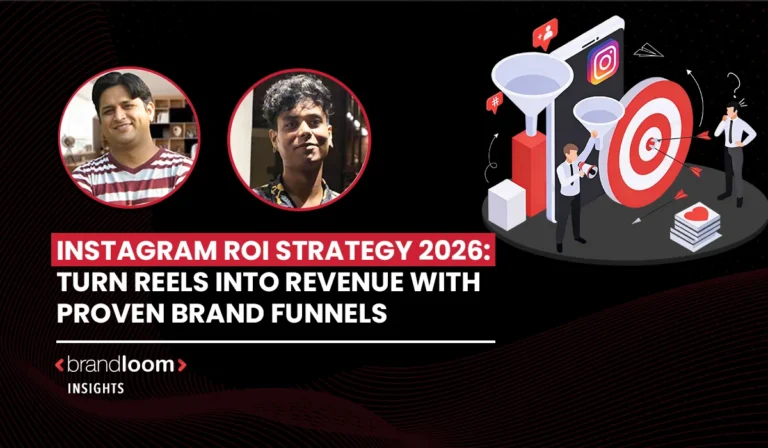
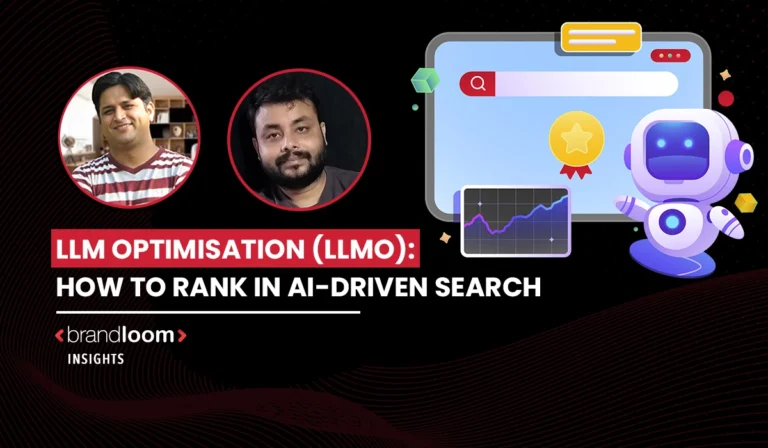
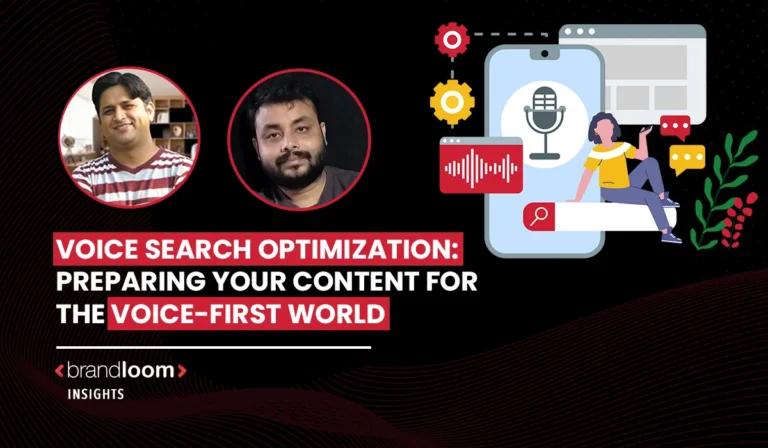
Thanks for sharing valuable insights.